Moderately strong M5.8 solar flare erupts from Region 2644
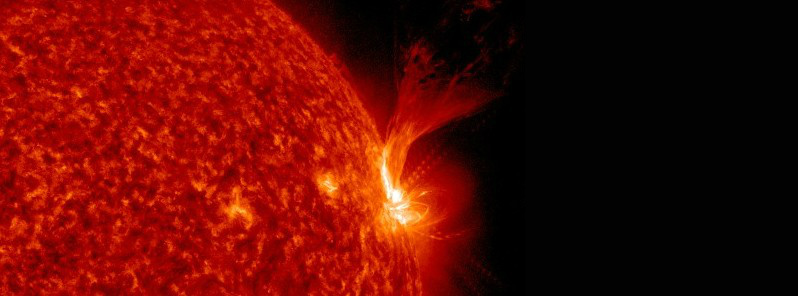
A moderately strong solar flare measuring M5.8 (R2 – Moderate) erupted from Region 2644 at 14:29 UTC on April 3, 2017. The event started at 14:19 and ended at 14:34 UTC. This is the 7th and the strongest M-class solar flare since late April 1, 2017. It is also the strongest solar flare since M7.6 on July 23, 2016.
Active Region 2644 has beta magnetic configuration and is capable of more moderate to strong eruptions on the Sun but its location does not favor Earth-directed coronal mass ejections (CMEs). The region has produced 7 M-class solar flares since M4.4 at 21:48 UTC on April 1 and several CMEs. None of it appears to be Earth-directed.
A type II (746 km/s) and IV radio sweeps were associated with the event indicating a CME was produced.

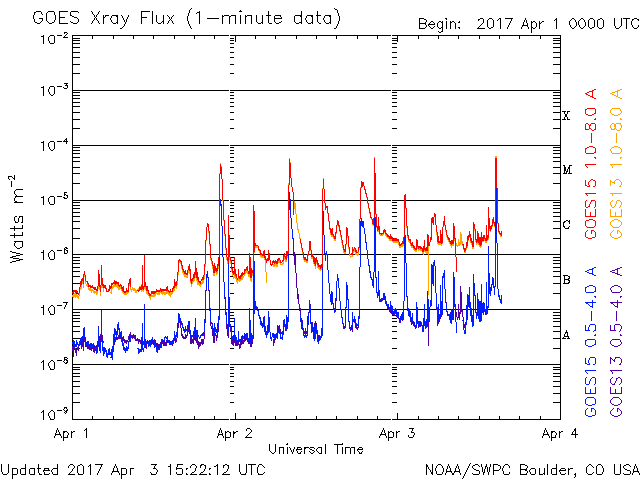
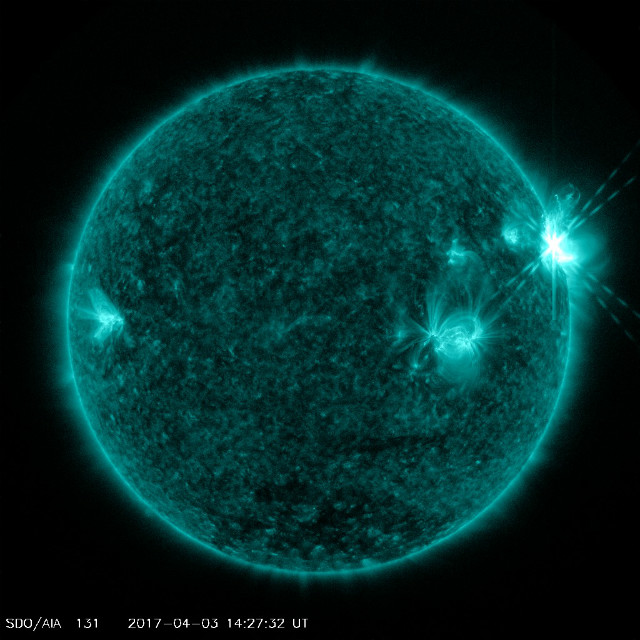
M5.8 solar flare on April 3, 2017. Credit: NASA SDO/AIA
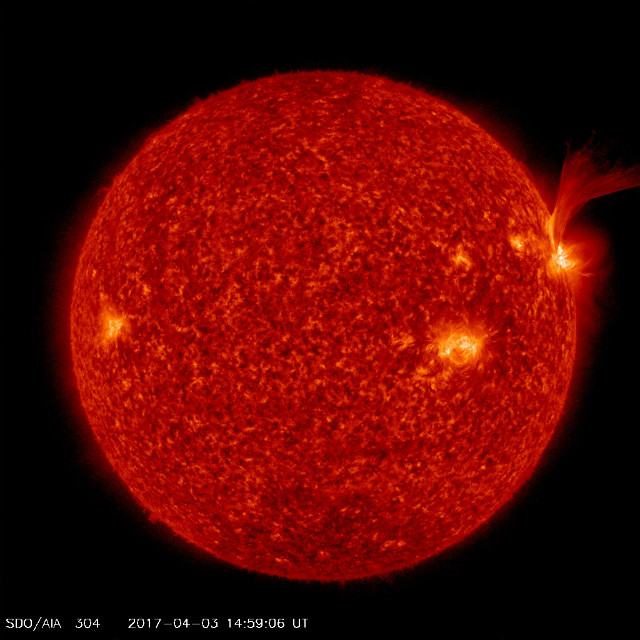
M5.8 solar flare on April 3, 2017. Credit: NASA SDO/AIA
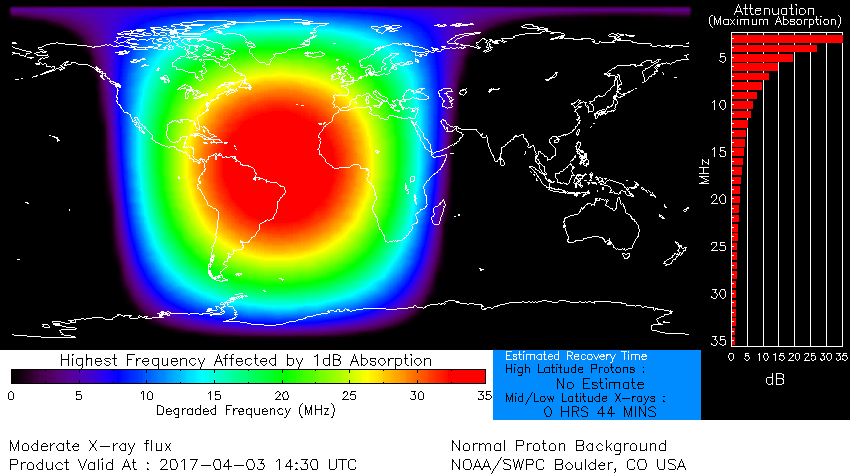
M5.8 solar flare on April 3, 2017 – D-RAP. Credit: NOAA/SWPC
Region 2644 is about to start its far side rotation but we still might see some action from it today and tomorrow.
Over the next two days (April 3 – 4), solar activity is likely to be at moderate levels with a slight chance for X-class flares. By April 5, activity levels will decrease to a chance for moderate flares with a slight chance for X-class flares due to Region 2644s departure of the visible disk on or about April 4 – 5.
Read more: Six M-class solar flares erupt from Region 2644
Sunspots
There are currently 3 active sunspot regions on the Earth-side of the Sun.
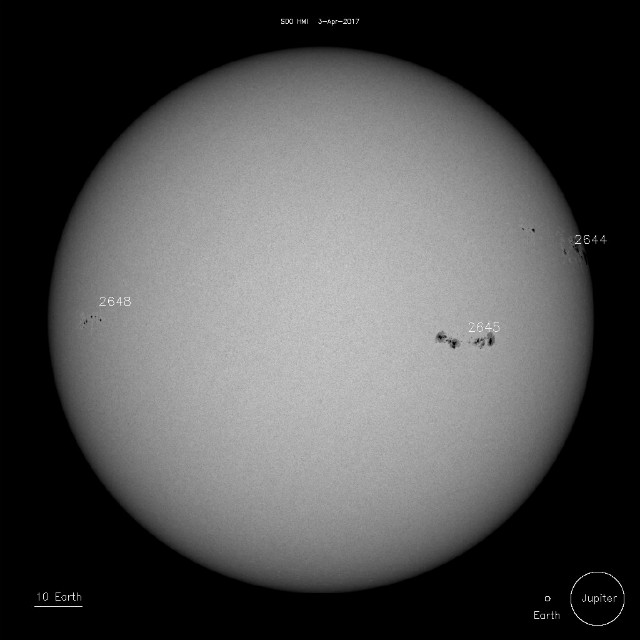
Sunspots on April 3, 2017. Credit: NASA SDO/HMI
2644 – Beta-Gamma
2645 – Beta-Gamma-Delta
2648 – Beta
Featured image: M5.8 solar flare from Region 2644 on April 3, 2017. Credit: NASA SDO/AIA 304

HI. I am. درصورت امکان تاثیر فوران نقطه به نقطه سطح خورشید . بر روی سطح زمین را برایم ارسال کنید .با تشکر.